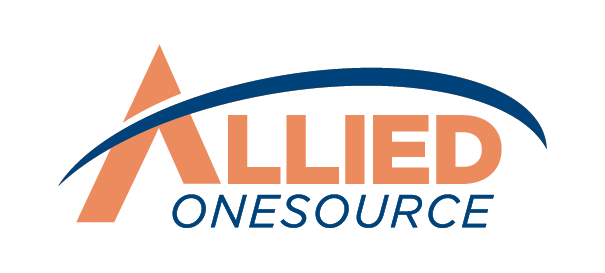Why Failing to Follow Instructions Could Cost You the Job: 4 Key Steps to Perfecting Applications
Following instructions might seem like a no-brainer when applying for jobs, but it’s surprisingly easy to overlook. Employment applications often feel like a race, and when juggling multiple opportunities, it’s tempting to skim instructions or assume you know what’s expected. However, this mindset can lead to errors like missing required fields or uploading the wrong file type, mistakes that could cost you the job.
Even when you’re careful, instructions are often scattered across job descriptions, emails, and application portals, making it difficult to piece together the full picture. Employers place a high value on candidates who can follow directions. It signals professionalism, reliability, and respect for their time. Missing even one small detail could mean your application isn’t reviewed, no matter how qualified you are.
Ready to make sure your dream job doesn't slip away due to avoidable errors? Let's dive in.
Why Details Matter: Common Mistakes
If you’ve ever wondered why the hiring process often has so many steps and specific instructions, it’s because employers use them as filters. In fact, about 50 percent of employers say the length and complexity of application processes are a positive because it "weeds out" applicants who aren’t serious about the role.¹
This focus on details isn’t accidental. With so many applications to review, recruiters rely on strict adherence to guidelines as a quick way to identify strong candidates. Instructions serve as a filter to find individuals who can demonstrate thoroughness and respect for process, traits every employer values.
Your ability to follow instructions isn’t just about checking boxes, it reflects your professionalism and reliability. Small errors, like forgetting to attach a required document or missing a mandatory field, can signal a lack of care, potentially costing you the job.
Let’s be honest. Following every instruction takes extra time and effort. But it’s worth it. By double-checking and ensuring your application is error-free, you’ll make it past the initial screening and stand out as a detail-oriented professional. Who doesn’t want to make a great first impression and boost their chances of landing the job?
Read More: Ace the Temp Job Interview: Key Questions and Answers
Your Pre-Submission Application Checkpoints
The keys to double-checking your submission are thoroughness and consistency. Understand which details are important for submission, like mandatory fields, required documents, and formatting guidelines. These are what you should keep your eyes on. Here’s how you can avoid costly mistakes before submission:
1. Fill Out Mandatory Fields
Imagine you’re halfway through filling out that employment application and accidentally skip a small but important field like your phone number. It’s an easy mistake to make, especially when you’re sending multiple applications.
Here’s why it’s a big deal, incomplete forms often don’t even make it through applicant tracking systems (ATS), or recruiters might overlook them. You can’t know how each company has set up its systems, so your efforts could be wasted if you miss something that seems small such as a required field.
So, how do you avoid this? Start by carefully scanning for asterisks (*) or labels that indicate required fields. These visual cues are there to guide you. If the application portal allows, save your progress occasionally and take a moment to review everything before hitting submit.
Paying attention to these small details can save you from major frustration later. Don’t let a simple oversight cost you an opportunity; double-check your application to ensure every field is complete and accurate.
2. Attach All Required Documents
If a job description asks for a portfolio or cover letter, but you only attach your resume in the rush to apply, your application is likely to be discounted because you did not pay attention to detail.
Missing documents leave recruiters with an incomplete picture of your qualifications. Even if your resume is impressive, failing to provide all requested materials can signal a lack of attention to detail or worse, suggest that you don’t meet the requirements.
To avoid this, create a checklist of required materials for each application, resume, cover letter, portfolio, references, or any other specific request. Before submitting, double-check the upload sections to ensure all necessary files are attached and in the correct formats. Though small, taking a few extra minutes to review can make all the difference.
Read More: How to Write the Perfect Cover Letter
3. Pay Attention to Specific Instructions
Application forms usually have specific instructions and ignoring them can hurt your chances of landing the job. For example, if the instructions ask you to include the job title in the email subject line, such as “Application for System Administrator,” but you send the email with a vague subject like “Application Submission,” it could lead to your application being overlooked.
If the role requires precision or creativity, ignoring specific instructions will send the wrong message to recruiters and might be enough to disqualify you. Take the time to follow every instruction to the letter.
Highlight instructions as you read the job description. Pay attention to specific requests and create a “must-do” checklist to ensure you address every requirement. Sometimes, these extra steps keep you on track and show you’re committed and thorough. Remember, you want to stand out for the right reasons.
Read More: The Top Mistakes Job Seekers Make When Filling Out Online Applications—And How to Avoid Them
4. Take Advantage of Smart Tools
Applications with typos, poor grammar, or formatting issues can make you appear unprofessional. Even if you have all the right skills, small mistakes can give recruiters the wrong impression. So much so that recruiters tend to associate spelling mistakes with negative traits in applicants.
They believe candidates who make these errors may have lower interpersonal skills, lack attention to detail, and reduced mental abilities, and resumes with many spelling errors are 18.5 percent less likely to secure an interview compared to ones without.²
Use tools like Grammarly or Hemingway to spot spelling and grammar errors. These tools can quickly catch things that might slip through during a manual review. It’s also a good idea to preview your application before submitting to check for formatting issues or file upload problems.
Proofreading and Review: Tips for Error-Free Applications
Submitting your application is a big step in your career journey, and making sure it’s error-free is essential. Before hitting submit, take time to thoroughly review your application. Here's how you to do that:
- Read Aloud: This will help you hear the difference between what you meant to submit and what you actually want to submit. It will help you catch awkward phrasing, grammar mistakes, and missing words.
- Take a Break Before Proofreading: Crafting and sending out applications can be stressful. It is important to step away after you finish your application before reviewing it. Coming back with fresh eyes will help you spot mistakes you might have missed when you were too focused on completing the task.
- Ask for a Second Opinion: Similarly, ask a mentor, friend, or colleague to review your application for a fresh perspective. Sometimes, an outside eye will catch whatever you miss.
- Proof Your Contact Information: Double-check that your contact details, such as your phone number and email address, are correct. A simple typo in your contact information could mean missing out on an interview.
Follow Instructions for Success
Let’s face it, perfecting your applications requires a lot of effort, especially when you’re juggling multiple job offers. But don’t fret.
Allied OneSource is your trusted partner to make your job search a walk in the park.
We see you and we understand the unique challenges candidates like you face to land their dream jobs. We are committed to connect you with the right opportunities made just for you. Contact us today.
References
- Zielinski, Dave. “Study: Most Job Seekers Abandon Online Job Applications.” SHRM, 21 Dec. 2023, www.shrm.org/mena/topics-tools/news/technology/study-job-seekers-abandon-online-job-applications.
- Sterkens, Philippe, et al. “Costly Mistakes: Why and When Spelling Errors in Resumes Jeopardise Interview Chances.” PLoS ONE, vol. 18, no. 4, Apr. 2023, p. e0283280. https://doi.org/10.1371/journal.pone.0283280.











